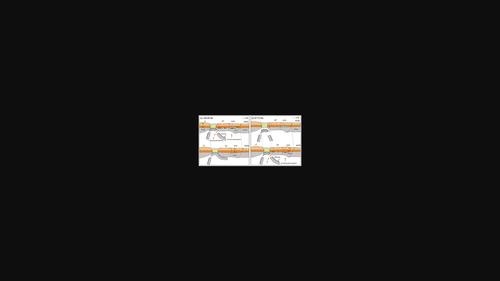当前位置:
X-MOL 学术
›
Geolog. J.
›
论文详情
Our official English website, www.x-mol.net, welcomes your
feedback! (Note: you will need to create a separate account there.)
Geochemistry of Late Cretaceous granitoids in the Yidun Terrane: Implications for petrogenesis and tectonic evolution in the eastern Tibetan Plateau
Geological Journal ( IF 1.4 ) Pub Date : 2022-08-09 , DOI: 10.1002/gj.4565 Zhuanrong Sun 1, 2 , Guochen Dong 2 , Yanick Brice Lemdjou 3 , Yanick Blaise Ketchaya 2 , Yanning Pan 4 , Jianheng Guo 1 , Zhongbao Wang 1
Geological Journal ( IF 1.4 ) Pub Date : 2022-08-09 , DOI: 10.1002/gj.4565 Zhuanrong Sun 1, 2 , Guochen Dong 2 , Yanick Brice Lemdjou 3 , Yanick Blaise Ketchaya 2 , Yanning Pan 4 , Jianheng Guo 1 , Zhongbao Wang 1
Affiliation

|
Granites from the eastern Tibetan Plateau record information about the Tethys evolution. This paper reports a systematic study on the N-S-trending Late Cretaceous granite belt in the Yidun Terrane. The studied rocks are A-type granites and I-type granites with adakitic affinity. From north to south, the studied rocks have intermediate ages and whole-rock geochemistry that shows a transitional composition. The granites from the northern Yidun Terrane were emplaced at 106–90 Ma. They are characterized by high silica (SiO2 > 70 wt.%) contents, low Mg# (10–38), Eu/Eu*(0.09–0.70), Sr/Y (1–12), and La/Yb (5–21) values and positive to negative εHf(t) (−7.6 to +2.5). In contrasts, granites from the southern Yidun Terrane were emplaced at 87–75 Ma and are intermediate to felsic with SiO2 < 70 wt.%, and higher Mg# (34–69), Eu/Eu* (0.64–1.01), Sr/Y (16–71), La/Yb (22–41) values, and negative εHf(t) values (−9.1 to −1.3). These features together with the Sr–Nd isotopic compositions show that granites from the northern Yidun Terrane were derived from partial melting of ancient crustal from the Yidun Terrane (Xiuwacu granite), with contributions of mantle-derived components (Queershan and Genie batholiths). Granites from the southern Yidun Terrane likely originated from ancient thickened-crustal source. The increase of Sr/Y and (La/Yb)N ratios from north to south suggests a crustal thickening, which influenced the magmatic process, resulting in the transition of geochemical composition of the studied granites. An eastward migrating arc post-collisional model is proposed for the Lhasa-Qiangtang collision when compared to the eastward younging Late Cretaceous granites in the Qiangtang Terrane. The southward migrating granitic magmatism in the Yidun Terrane was triggered by the eastward migrating rollback of the flat-subducted Bangong–Nujiang oceanic slab beneath the Qiangtang Terrane.
中文翻译:

伊敦地体晚白垩世花岗岩地球化学:对青藏高原东部成因和构造演化的启示
青藏高原东部的花岗岩记录了特提斯演化的信息。本文系统地研究了义墩地体中南北向晚白垩世花岗岩带。研究的岩石为具有埃达克体亲和性的A型花岗岩和I型花岗岩。从北到南,研究的岩石具有中间年龄和全岩地球化学,显示出过渡成分。宜敦地体北部的花岗岩在 106-90 Ma 就位。它们的特点是二氧化硅含量高 (SiO 2 > 70 wt.%),Mg # (10-38)、Eu/Eu*(0.09-0.70)、Sr/Y (1-12) 和 La/Yb ( 5–21) 值和正到负ε Hf( t)(-7.6 到 +2.5)。相比之下,来自伊敦地体南部的花岗岩位于 87-75 Ma 并且是中长英质,SiO 2 < 70 wt.%,更高的 Mg # (34-69)、Eu/Eu* (0.64-1.01), Sr/Y (16-71)、La/Yb (22-41) 值和负ε Hf( t ) 值(-9.1 到 -1.3)。这些特征连同 Sr-Nd 同位素组成表明,伊敦地体北部的花岗岩来源于伊敦地体的古地壳(秀瓦厝花岗岩)的部分熔融,并有地幔成因(雀儿山和 Genie 基岩)的贡献。宜敦地体南部的花岗岩可能起源于古老的加厚地壳源。Sr/Y和(La/Yb) N的增加从北到南的比例表明地壳增厚影响了岩浆过程,导致所研究花岗岩的地球化学成分发生转变。与羌塘地体晚白垩世花岗岩东移年轻化相比较,提出了拉萨-羌塘碰撞东移弧后碰撞模型。义墩地体南移花岗质岩浆作用是由羌塘地体下方平坦俯冲的班公—怒江洋板东移回滚引发的。
更新日期:2022-08-09
中文翻译:

伊敦地体晚白垩世花岗岩地球化学:对青藏高原东部成因和构造演化的启示
青藏高原东部的花岗岩记录了特提斯演化的信息。本文系统地研究了义墩地体中南北向晚白垩世花岗岩带。研究的岩石为具有埃达克体亲和性的A型花岗岩和I型花岗岩。从北到南,研究的岩石具有中间年龄和全岩地球化学,显示出过渡成分。宜敦地体北部的花岗岩在 106-90 Ma 就位。它们的特点是二氧化硅含量高 (SiO 2 > 70 wt.%),Mg # (10-38)、Eu/Eu*(0.09-0.70)、Sr/Y (1-12) 和 La/Yb ( 5–21) 值和正到负ε Hf( t)(-7.6 到 +2.5)。相比之下,来自伊敦地体南部的花岗岩位于 87-75 Ma 并且是中长英质,SiO 2 < 70 wt.%,更高的 Mg # (34-69)、Eu/Eu* (0.64-1.01), Sr/Y (16-71)、La/Yb (22-41) 值和负ε Hf( t ) 值(-9.1 到 -1.3)。这些特征连同 Sr-Nd 同位素组成表明,伊敦地体北部的花岗岩来源于伊敦地体的古地壳(秀瓦厝花岗岩)的部分熔融,并有地幔成因(雀儿山和 Genie 基岩)的贡献。宜敦地体南部的花岗岩可能起源于古老的加厚地壳源。Sr/Y和(La/Yb) N的增加从北到南的比例表明地壳增厚影响了岩浆过程,导致所研究花岗岩的地球化学成分发生转变。与羌塘地体晚白垩世花岗岩东移年轻化相比较,提出了拉萨-羌塘碰撞东移弧后碰撞模型。义墩地体南移花岗质岩浆作用是由羌塘地体下方平坦俯冲的班公—怒江洋板东移回滚引发的。











































 京公网安备 11010802027423号
京公网安备 11010802027423号